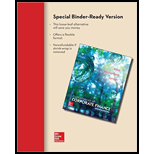
Concept explainers
Terms of Sale [LO1] A firm offers terms of 1/10, net 30. What effective annual interest rate does the firm earn when a customer does not take the discount? Without doing any calculations, explain what will happen to this effective rate if:
a. The discount is changed to 2 percent.
b. The credit period is increased to 45 days.
c. The discount period is increased to 15 days.
(a)
To determine: The effective annual rate (EAR)
Introduction:
Credit term refers to customer’s ability to acquire goods before making payment, depends on the trust that payment will be paid in future.
Answer to Problem 5QP
The effective annual rate (EAR) is 20.13%.
Explanation of Solution
Given information:
The terms “1/10 net 30” means the customers receive 1% discount if they make the payment in 10 days, with the total amount due in 30 days if the discount is not received.
In this case, 30 days is the credit period, 10 days is the period of discount, and 2% is the amount of cash discount.
Here, the percentage of discount interest is 1% on
The formula to calculate the periods per year:
Hence, the periods per year is 18.25.
The formula to calculate the periodic interest rate:
Hence, the periodic interest rate is 1.01%.
The formula to calculate effective annual rate:
Hence, the effective interest rate is 20.13%.
To determine: The EAR.
Answer to Problem 5QP
The effective annual rate (EAR) is 44.59%.
Explanation of Solution
Given information:
The terms “2/10 net 30” means the customers receive 2% discount if they make the payment in 10 days, with the total amount due in 30 days if the discount is not received.
In this case, 30 days is the credit period, 10 days is the period of discount, and 2% is the amount of cash discount.
Here, the percentage of discount interest is 2% on
The formula to calculate the periods per year:
Hence, the periods per year is 18.25.
The formula to calculate the periodic interest rate:
Hence, the periodic interest rate is 2.04%.
The formula to calculate effective annual rate:
Hence, the effective interest rate is 44.59%.
(b)
To determine: The effective annual rate (EAR)
Answer to Problem 5QP
The effective annual rate (EAR) is 11.05%.
Explanation of Solution
Given information:
The terms “1/10 net 45” means the customers receive a 1% discount if they pay in 10 days, with the total amount due in 45 days if the discount is not received.
In this case, 45 days is the credit period, 10 days is the period of discount, and 1% is the amount of cash discount.
Here, the percentage of discount interest is 1% on
The formula to calculate the periods per year:
Hence, the periods per year is 10.43.
The formula to calculate the periodic interest rate:
Hence, the periodic interest rate is 1.01%.
The formula to calculate effective annual rate:
Hence, the effective interest rate is 11.05%.
(c)
To determine: The effective annual rate (EAR)
Answer to Problem 5QP
The effective annual rate (EAR) is 27.71%.
Explanation of Solution
Given information:
The terms “1/15 net 30” mean the customers receive a 1% discount if they pay in 10 days, with the total amount due in 30 days if the discount is not received.
In this case, 30 days is the credit period, 15 days is the period of discount, and 2% is the amount of cash discount.
Here, the percentage of discount interest is 1% on
The formula to calculate the periods per year:
Hence, the periods per year is 24.33.
The formula to calculate the periodic interest rate:
Hence, the periodic interest rate is 1.01%.
The formula to calculate effective annual rate:
Hence, the effective interest rate is 27.71%.
Want to see more full solutions like this?
Chapter 20 Solutions
Fundamentals of Corporate Finance (Special Edition for Rutgers Business School)
- What are the key differences between stocks and bonds as investment options? i need correct solution without aiarrow_forwardWhat are the key differences between stocks and bonds as investment options? i need answer properly.arrow_forwardWhat are the key differences between stocks and bonds as investment options?need helparrow_forward
- What are the key differences between stocks and bonds as investment options?arrow_forwardWhat is diversification, and how can it reduce risk in a portfolio? i need correct answer for this question.arrow_forwardI need answer What is diversification, and how can it reduce risk in a portfolio?arrow_forward
- What is the risk-return tradeoff, and why is it important in finance?arrow_forwardNo chatgpt! Can you explain the concept of net present value (NPV) and how it is used in investment decisions?arrow_forwardCan you explain the concept of net present value (NPV) and how it is used in investment decisions?i need answerarrow_forward
 Intermediate Financial Management (MindTap Course...FinanceISBN:9781337395083Author:Eugene F. Brigham, Phillip R. DavesPublisher:Cengage Learning
Intermediate Financial Management (MindTap Course...FinanceISBN:9781337395083Author:Eugene F. Brigham, Phillip R. DavesPublisher:Cengage Learning


